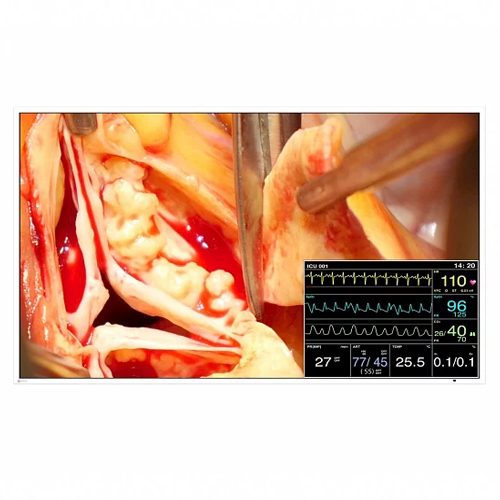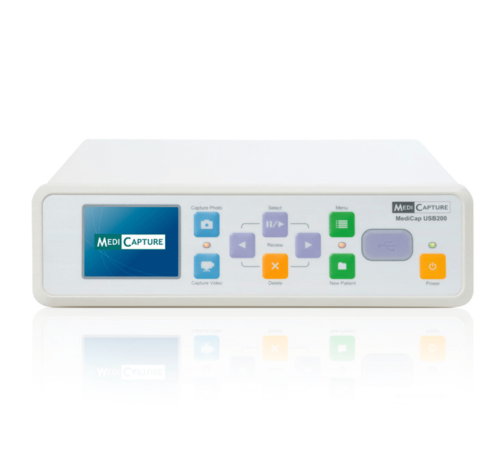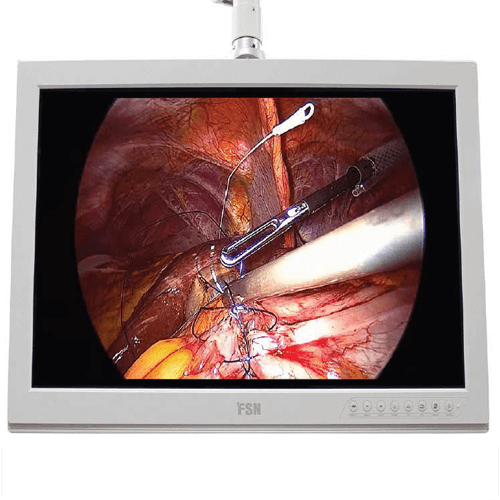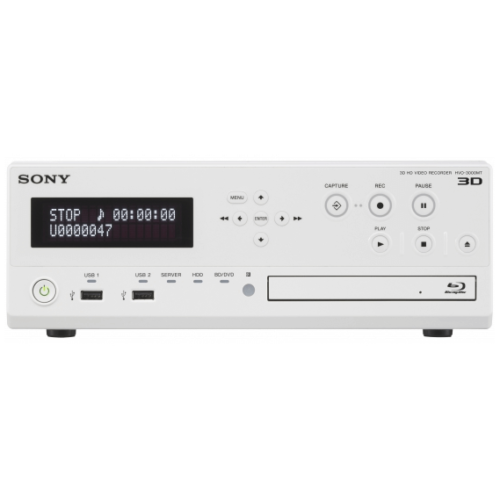Description
With an image diagonal of 49” and a resolution of 1920 x 1080 pixels, the monitor is suited for displaying different image sources simultaneously. For example, DICOM X-rays and endoscopic images can be shown side-by-side in the surgical environment. The large image diagonal makes the monitor ideal for mounting on the OP wall and viewing images from a greater distance. Images can be scaled full screen, reproduced in their original size, or displayed in or next to one another with the PiP and PaP functions.
Flexible Usage
The monitor supports a wide spectrum of timings and can be adapted easily to the various signal requirements in the operating room. Together with its numerous input and output connectors, the monitor can be used in a variety of ways with established imaging systems. Depending on the procedure and requirements, users for example can quickly switch between endoscopic images, X-ray images in DICOM, and modality images with specialized timing, or combine these with other images.
Comfortably View from Any Angle
Wide viewing angles allow the monitor to be viewed from the side with minimal color shift, thus offering a quality image to multiple persons watching from different perspectives simultaneously.
Preset Look-Up Tables
The monitor is pre-calibrated in the factory. With five application-oriented look-up table (LUT) presets and a user-configurable LUT function, the monitor is easy to install and maintain. It can be quickly adapted to the local viewing and lighting conditions or application preferences as needed.
User-Defined LUT Function
With the user-defined lookup table (LUT), the default gamma model, color coordinates, and brightness of the LX491W can be adapted to individual requirements without additional sensors and software. With Force Mode, even the unknown timing of an older medical system can be analyzed and implemented in the monitor. As a result, even timing outside the standard range can be displayed on the monitor. This ensures compatibility, especially with older medical systems. And adaptations in the field, for example when replacing a device, become very easy.
Numerous Video Inputs
The LX491W can be connected to imaging systems via various video inputs, such as DVI, 3G-SDI, Composite, S-Video, and VGA. The monitor can be simultaneously connected to both digital and traditional video signals (PAL, NTSC). If necessary, the video input settings can be adjusted using the OSD (On Screen Display) menu.
Simultaneous Display of Different Image Sources
Thanks to the monitor’s widescreen format, the various input signals can be displayed in “picture-in-picture” (PiP) or side-by-side (PaP) orientations. This reduces the need for additional monitors, allowing users to view critical source images while simultaneously maintaining a view over other vital information.
Laminated Safety Glass for Easy Cleaning
The anti-reflective laminated safety glass ensures excellent image quality while protecting the monitor from scratch damage or liquid ingress during surgery or when cleaning and disinfecting the monitor.
LED Backlight
The monitor is equipped with an LED backlight that has been optimized for bright environments. LED technology offers a long lifetime expectancy even at high luminance settings.
Quick Brightness Stabilization for Instant Viewing
EIZO’s fully automated stability function makes use of an internal backlight sensor to quickly stabilize the brightness level at startup and to compensate for fluctuations caused by variations in ambient temperature and the passage of time.
Monitor – Fanless Silent Design
Fanless Silent Design
Engineered to dissipate heat without a fan, the monitor generates no distracting noises and does not circulate dust and germs or disturb the controlled laminar airflow within the operating room.
Diagnostic Precision with Factory Adjustment
To ensure the most accurate and consistent images possible, EIZO carefully measures and sets every tone on the production line to offer image quality tailored specifically to medical needs like gamma 2.2 and the DICOM Part 14 Standard.
EIZO, which means image in Japanese, is a visual technology company that develops and manufactures high-end display solutions. EIZO integrates hardware and software technologies with consulting, web hosting, and other services to help customers in business, graphics, gaming, medicine, maritime, air traffic control, and other fields work more comfortably, efficiently, and creatively. Headquartered in Hakusan, Japan, EIZO has R&D and manufacturing facilities in Japan, China, Germany, and the U.S., and representation in more than 80 countries.





